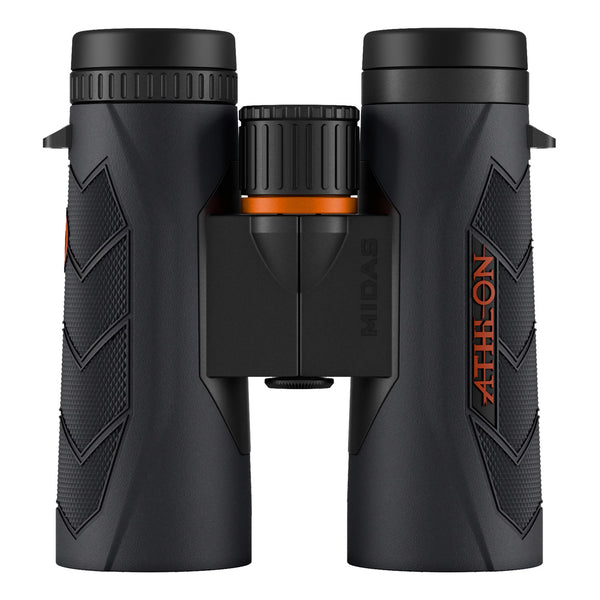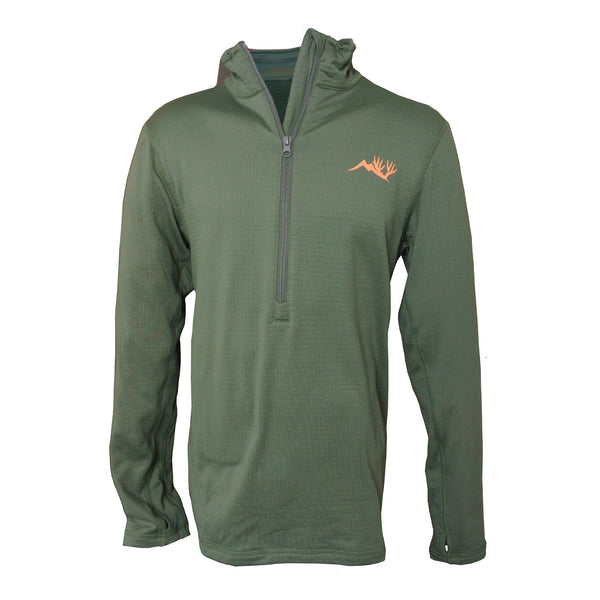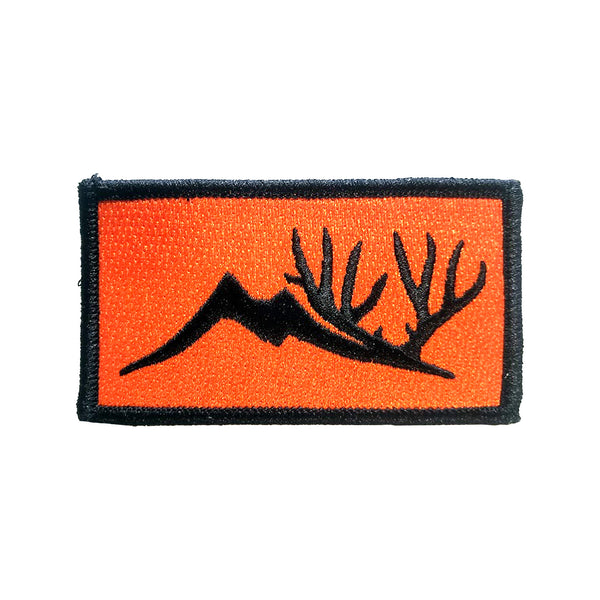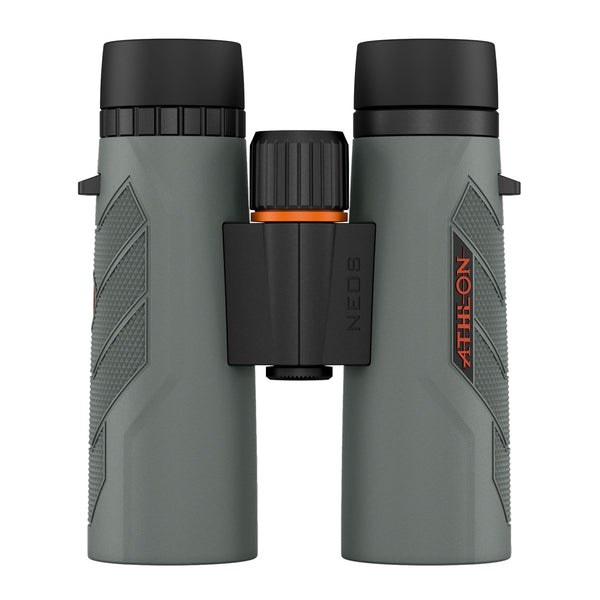Have you ever spotted a bull elk and called to him just to see him lift his head up and walk away? It has happened to all of us. I have a theory for why this happens and a tactic that might better the odds of a bull sticking around.
It was September 22, 2011 on public land and I was hunting with my good friend and long time hunting buddy Shaun Sturlaugson. We had over-the-counter tags in our pockets and the week had been uneventful as the temperatures were in the 70’s. Shaun and I had been hitting the mountains hard as the days were winding down on our eight day elk hunt. The elk we were pursuing lived close to a main road and were very wise to modern hunting tactics.
After the morning hunt of day six we had heard little from the elk. Shaun and I headed back to camp for breakfast and a nap. The sun was beating down on the camper and the flies were buzzing in the window sills. I dozed off for an afternoon nap while Shaun read for a while then opened up the door and looked to the west. Black storm clouds were rolling in. “Finally!” he thought, as he nudged me and told me to get up. Quickly we picked up camp, grabbed our gear, sprayed down with scent eliminator, and headed down the mountain.
As we approached the willowed creek bottom the rain started to fall as did the temperature. We glassed up a four point rag bull raking his horns. Although it was three in the afternoon the temperature was around 50 degrees now. The elk were on their feet and a herd bull down the canyon sounded off. It was as if he was giving permission for the neighboring bulls to speak as we heard several other bugles close by.
Shaun and I set up in a small stand of pine trees that stretched towards the creek bottom. Shaun was the shooter, I was the caller. I began with a few cow calls and a distinct bugle from my Primos pack bugle. It didn’t take long. In the next twenty minutes four different bulls came from across the bottom to within bow range, one after another. Passing up shot after shot, the bulls kept getting bigger. A spike, a four point, a five point, and then a small six point! It was easy for Shaun to pass on the bulls however, as this was the night of all September nights! Two big bulls began fighting on the hillside across the canyon. As the big bulls fought, the cows were being pushed by smaller bulls. You could see elk feeding in almost every opening.
As the biggest of the four bulls we had called in began to trot away, Shaun and I heard a growl from about one hundred yards away. It sounded like a bear but had the distinguishing bellow of an elk. I bugled. The bull growled back. I bugled and raked a tree. The bull bugled, growled, and raked a tree.
“Growler” and I continued to call back and forth with each other. It was as if we were building a relationship. I was getting to know him and he was getting to know me. The evening was wearing on but our relationship was getting stronger. I was throwing everything I had at this bull but the key to getting this bull in was that I continued with the same Primos pack bugle.
After over an hour of arguing back and forth, I convinced this bull to show his face. The bull came in slowly, taking a step then pausing to look around. After breaking the tree line, Shaun took a broadside shot and hit the bull in the lungs. I watched as the bull ran down to the bottom and stopped. I could see his legs begin to wobble until he fell down. It felt like a dream as the rest of the elk continued to break the cold air with cow calls and bugles. Shaun and I walked away from that hunt with a general season bull of a lifetime. Through our experiences we learned some valuable tactics. You see, the thing I did right with this old cautious bull was that I built a relationship with him.
I have come to find out that although elk are grazers they also have home ranges. They have grown up with each other and spend the summers with each other. At times other elk will move into an area but for the most part the bulls who call a particular canyon or basin home know what the neighboring bulls sound like, smell like, and act like. It is a red flag to some bulls when they hear a new bull introduce himself by sounding off one day. This is especially true in an area that has several different hunters. Sometimes this pays off and you get a bull that is curious. These bulls however normally succumb to the arrow and never reach their full potential.
As an example of the relationships bulls build, I’d like to relay another hunt in which Shaun and I witnessed this first hand. We had hiked into a canyon during the September archery hunt to try one last crack at a herd bull in the area. We listened to the heard bull bugle across the canyon from us. We had been hunting this bull for a week prior, but he had yet to come into our calls. This morning we had just watched him round up and push his cows into a set of dark timber to spend the afternoon.
As we listened we heard another bull bugle from his bed on our side of the canyon. We listened as the big herd bull ripped a bugle in response. The two bulls called back and forth for over an hour and a half. Shaun and I identified the bull from our side of the canyon as a small six point. The small six marched stoutly across the willow bottom and up the other side hill towards the dark timber. We wondered what was going on behind the tree line. A few moments later the aggressive little six ran back to our side of the canyon with his tail between his legs. We noticed the matching short fifth points and recognized this bull as a small six point that had been pushing cows on the hillside a week prior while the big bull was distracted.
After watching this long drawn-out display of machoism between the two bulls, Shaun and I realized that these two bulls knew each other more than we knew. That they had a relationship and had potentially lived summer or winter with each other for some time. The smaller bull was quickly allowed to enter the tree line converging on the herd bull bugling back and forth the entire way. The small bull entered the trees without the herd bull pushing his cows up and over the ridge like he had done every time Shaun and I tried the same move.
When one really considers that many bulls bachelor up before and after the rutting season it is quite possible that these elk may become quite acquainted with one another over the years.
So the next time you get a bull that does not want to come in to your calls but is somewhat vocal, try building a relationship with him before moving in on him. Wake up earlier and get him talking to you in the dark. Without getting busted, let him know that you are around and that you are not just calling to him at sunup until he pushes his cows away from you and beds up in a dark thick patch of timber. This is especially important when hunting elk that have a lot of human interaction or live within a mile of a main road. These elk have developed habits to deal with the pressure, and a little cow call followed by a random bugle probably will not be a smart public-land bull’s demise once one has reached five or six years of age.
Shaun and I walked away from that hunt with a general season bull of a lifetime. Through our experiences we learned some valuable tactics. You see, the thing I did right with this old cautious bull was that I built a relationship with him.
I have come to find out that although elk are grazers they also have home ranges. They have grown up with each other and spend the summers with each other. At times other elk will move into an area but for the most part the bulls who call a particular canyon or basin home know what the neighboring bulls sound like, smell like, and act like. It is a red flag to some bulls when they hear a new bull introduce himself by sounding off one day. This is especially true in an area that has several different hunters. Sometimes this pays off and you get a bull that is curious. These bulls however normally succumb to the arrow and never reach their full potential.
As an example of the relationships bulls build, I’d like to relay another hunt in which Shaun and I witnessed this first hand. We had hiked into a canyon during the September archery hunt to try one last crack at a herd bull in the area. We listened to the heard bull bugle across the canyon from us. We had been hunting this bull for a week prior, but he had yet to come into our calls. This morning we had just watched him round up and push his cows into a set of dark timber to spend the afternoon.
As we listened we heard another bull bugle from his bed on our side of the canyon. We listened as the big herd bull ripped a bugle in response. The two bulls called back and forth for over an hour and a half. Shaun and I identified the bull from our side of the canyon as a small six point. The small six marched stoutly across the willow bottom and up the other side hill towards the dark timber. We wondered what was going on behind the tree line. A few moments later the aggressive little six ran back to our side of the canyon with his tail between his legs. We noticed the matching short fifth points and recognized this bull as a small six point that had been pushing cows on the hillside a week prior while the big bull was distracted.
After watching this long drawn-out display of machoism between the two bulls, Shaun and I realized that these two bulls knew each other more than we knew. That they had a relationship and had potentially lived summer or winter with each other for some time. The smaller bull was quickly allowed to enter the tree line converging on the herd bull bugling back and forth the entire way. The small bull entered the trees without the herd bull pushing his cows up and over the ridge like he had done every time Shaun and I tried the same move.
When one really considers that many bulls bachelor up before and after the rutting season it is quite possible that these elk may become quite acquainted with one another over the years.
So the next time you get a bull that does not want to come in to your calls but is somewhat vocal, try building a relationship with him before moving in on him. Wake up earlier and get him talking to you in the dark. Without getting busted, let him know that you are around and that you are not just calling to him at sunup until he pushes his cows away from you and beds up in a dark thick patch of timber. This is especially important when hunting elk that have a lot of human interaction or live within a mile of a main road. These elk have developed habits to deal with the pressure, and a little cow call followed by a random bugle probably will not be a smart public-land bull’s demise once one has reached five or six years of age.
 Shaun and I walked away from that hunt with a general season bull of a lifetime. Through our experiences we learned some valuable tactics. You see, the thing I did right with this old cautious bull was that I built a relationship with him.
I have come to find out that although elk are grazers they also have home ranges. They have grown up with each other and spend the summers with each other. At times other elk will move into an area but for the most part the bulls who call a particular canyon or basin home know what the neighboring bulls sound like, smell like, and act like. It is a red flag to some bulls when they hear a new bull introduce himself by sounding off one day. This is especially true in an area that has several different hunters. Sometimes this pays off and you get a bull that is curious. These bulls however normally succumb to the arrow and never reach their full potential.
As an example of the relationships bulls build, I’d like to relay another hunt in which Shaun and I witnessed this first hand. We had hiked into a canyon during the September archery hunt to try one last crack at a herd bull in the area. We listened to the heard bull bugle across the canyon from us. We had been hunting this bull for a week prior, but he had yet to come into our calls. This morning we had just watched him round up and push his cows into a set of dark timber to spend the afternoon.
As we listened we heard another bull bugle from his bed on our side of the canyon. We listened as the big herd bull ripped a bugle in response. The two bulls called back and forth for over an hour and a half. Shaun and I identified the bull from our side of the canyon as a small six point. The small six marched stoutly across the willow bottom and up the other side hill towards the dark timber. We wondered what was going on behind the tree line. A few moments later the aggressive little six ran back to our side of the canyon with his tail between his legs. We noticed the matching short fifth points and recognized this bull as a small six point that had been pushing cows on the hillside a week prior while the big bull was distracted.
After watching this long drawn-out display of machoism between the two bulls, Shaun and I realized that these two bulls knew each other more than we knew. That they had a relationship and had potentially lived summer or winter with each other for some time. The smaller bull was quickly allowed to enter the tree line converging on the herd bull bugling back and forth the entire way. The small bull entered the trees without the herd bull pushing his cows up and over the ridge like he had done every time Shaun and I tried the same move.
When one really considers that many bulls bachelor up before and after the rutting season it is quite possible that these elk may become quite acquainted with one another over the years.
So the next time you get a bull that does not want to come in to your calls but is somewhat vocal, try building a relationship with him before moving in on him. Wake up earlier and get him talking to you in the dark. Without getting busted, let him know that you are around and that you are not just calling to him at sunup until he pushes his cows away from you and beds up in a dark thick patch of timber. This is especially important when hunting elk that have a lot of human interaction or live within a mile of a main road. These elk have developed habits to deal with the pressure, and a little cow call followed by a random bugle probably will not be a smart public-land bull’s demise once one has reached five or six years of age.
Shaun and I walked away from that hunt with a general season bull of a lifetime. Through our experiences we learned some valuable tactics. You see, the thing I did right with this old cautious bull was that I built a relationship with him.
I have come to find out that although elk are grazers they also have home ranges. They have grown up with each other and spend the summers with each other. At times other elk will move into an area but for the most part the bulls who call a particular canyon or basin home know what the neighboring bulls sound like, smell like, and act like. It is a red flag to some bulls when they hear a new bull introduce himself by sounding off one day. This is especially true in an area that has several different hunters. Sometimes this pays off and you get a bull that is curious. These bulls however normally succumb to the arrow and never reach their full potential.
As an example of the relationships bulls build, I’d like to relay another hunt in which Shaun and I witnessed this first hand. We had hiked into a canyon during the September archery hunt to try one last crack at a herd bull in the area. We listened to the heard bull bugle across the canyon from us. We had been hunting this bull for a week prior, but he had yet to come into our calls. This morning we had just watched him round up and push his cows into a set of dark timber to spend the afternoon.
As we listened we heard another bull bugle from his bed on our side of the canyon. We listened as the big herd bull ripped a bugle in response. The two bulls called back and forth for over an hour and a half. Shaun and I identified the bull from our side of the canyon as a small six point. The small six marched stoutly across the willow bottom and up the other side hill towards the dark timber. We wondered what was going on behind the tree line. A few moments later the aggressive little six ran back to our side of the canyon with his tail between his legs. We noticed the matching short fifth points and recognized this bull as a small six point that had been pushing cows on the hillside a week prior while the big bull was distracted.
After watching this long drawn-out display of machoism between the two bulls, Shaun and I realized that these two bulls knew each other more than we knew. That they had a relationship and had potentially lived summer or winter with each other for some time. The smaller bull was quickly allowed to enter the tree line converging on the herd bull bugling back and forth the entire way. The small bull entered the trees without the herd bull pushing his cows up and over the ridge like he had done every time Shaun and I tried the same move.
When one really considers that many bulls bachelor up before and after the rutting season it is quite possible that these elk may become quite acquainted with one another over the years.
So the next time you get a bull that does not want to come in to your calls but is somewhat vocal, try building a relationship with him before moving in on him. Wake up earlier and get him talking to you in the dark. Without getting busted, let him know that you are around and that you are not just calling to him at sunup until he pushes his cows away from you and beds up in a dark thick patch of timber. This is especially important when hunting elk that have a lot of human interaction or live within a mile of a main road. These elk have developed habits to deal with the pressure, and a little cow call followed by a random bugle probably will not be a smart public-land bull’s demise once one has reached five or six years of age.


















Leave a comment